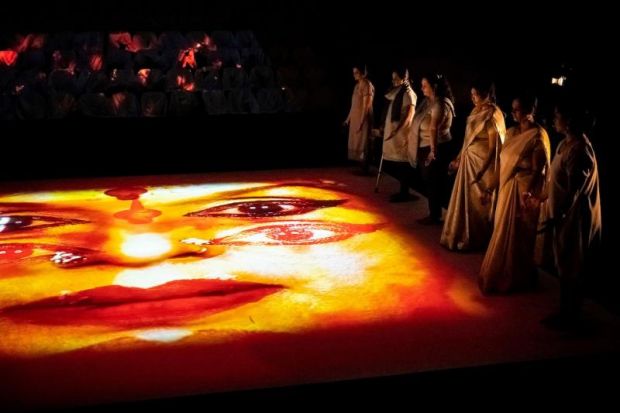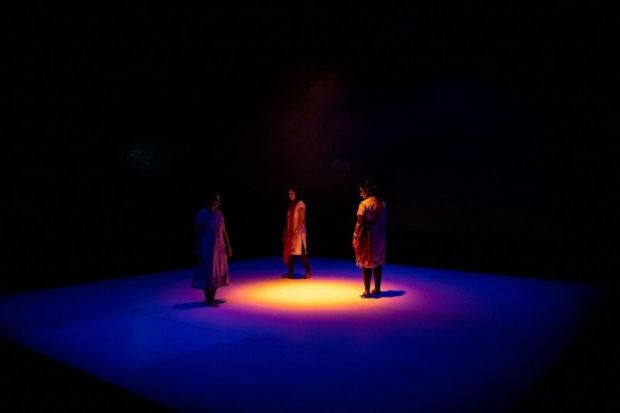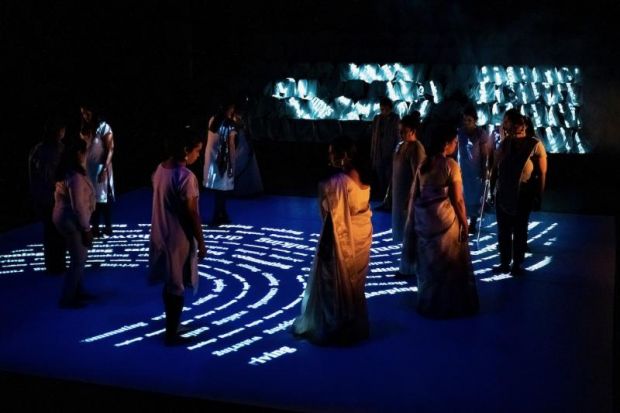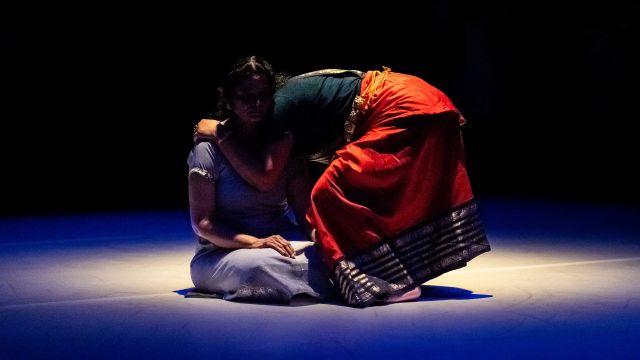The Durga Chronicles
With a brilliant dancer, a choreographed Keerthana choir of twelve women, traditional music, song, and enhanced by lighting and graphics, The Durga Chronicles creates two worlds. First, the divine world of the Goddess Durga, the carrier of feminine strength, ‘the ruler and destroyer of demons’. Second, the earthly, quotidian world in which human demons abuse, assault, and murder flesh and blood women.
What The Durga Chronicles seeks to do is to reconnect these worlds spiritually – that is, in the sense of contemporary women finding in the Goddess a source of inspiration and strength.

Indeed, as a chorus of women’s voices, in English, establish the fact that abuse, physical or mental, can happen to any woman, any time and any place, another plaintive voice asks, ‘Where are you, Durga?’ It is a question, in the face of suffering and death, in common with many religions – that is, that God has forsaken the faithful. Here, the show suggests that the faithful may have forsaken the Goddess. The connection has been lost and therefore a source of strength for solidarity and resistance has been lost. The show asks can that connection be remade.
One of the most powerful sections evokes this; it comes toward the end. Announced by a graphic projected on the stage, a single singer gives us a ‘lamentation’ that is almost without hope and intensely moving.

The central strength of The Durga Chronicles is the exquisite, mesmerising dancing of Priya Srinivasan, even if (like me) you do not know the meaning of the traditional precise hand and body movements. And yet, the dancer, surrounded always by the choric choir, conveys both the divine and the earthly. Other choreography, such as the movements of the choir, is perhaps not so clear – and the non-Hindi speaker must rely here almost entirely on visuals, which can be, in turn, rather opaque.
But it must be said, not opaque to the largely Indian – Hindu and Tamil - audience, clearly appreciative of and moved by this demonstration of the necessary connection between traditional culture and belief, and the contemporary world.

The recent census tells that people from South Asia now make up the largest component of migration to Australia. The Durga Chronicles is the centrepiece of a cultural event. The performance itself is intended partly to stimulate round table discussions with community leaders about women’s issues raised by the on-stage presentation. It is a presentation that mixes principally Indian traditions in music and dance with contemporary issues and imagery. Specialist academics and community leaders make up discussion panels to guide and contribute on such topics as abuse, mental health, literacy, family peace in South Asian communities, and a role for migrant and refugee men’s circles.
Michael Brindley
Photographer: T J Garvie
Subscribe to our E-Newsletter, buy our latest print edition or find a Performing Arts book at Book Nook.

